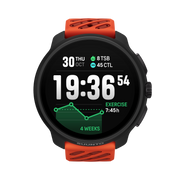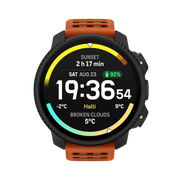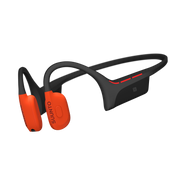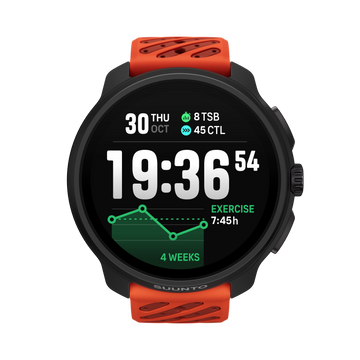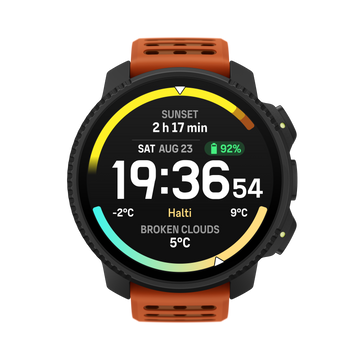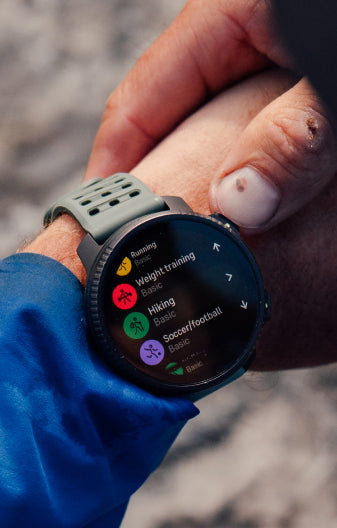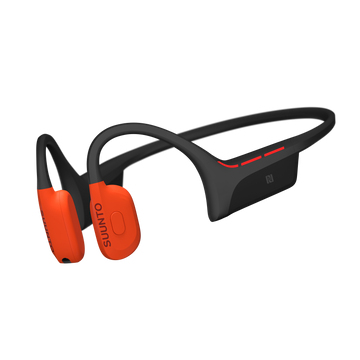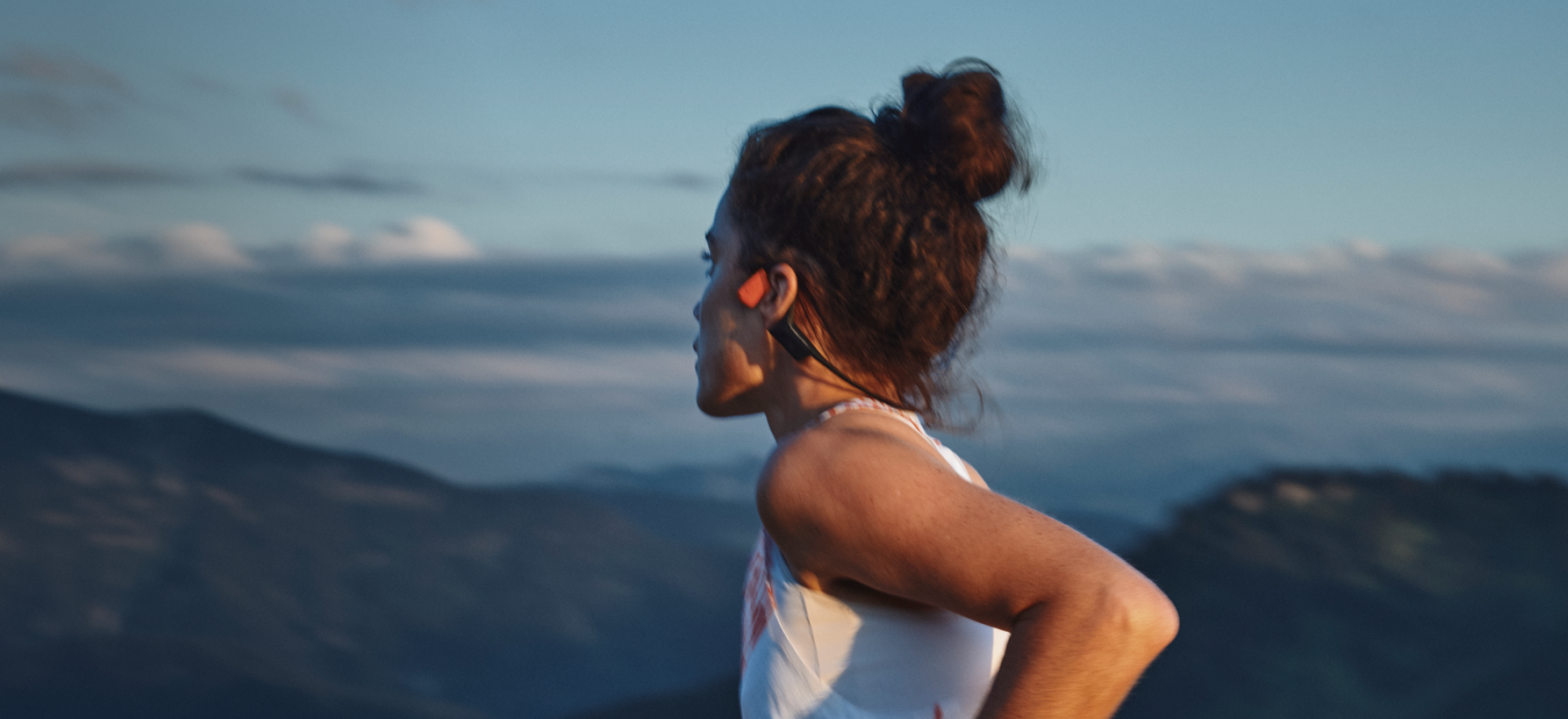

Suunto Blog
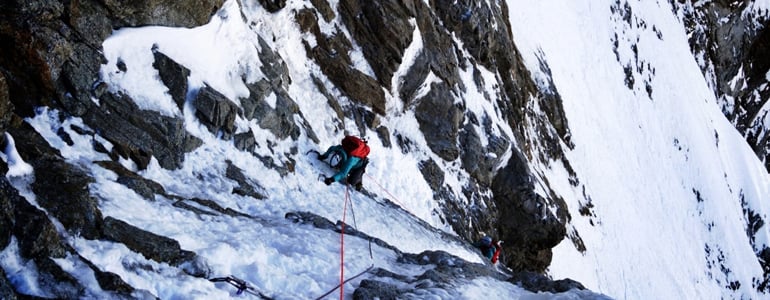
Great conditions on the Grandes Jorasses
Unseasonal weather has put the epic north face of the Grandes Jorasses in great condition. On hand to take advantage were Matthias Scherer and Tanja Schmitt. Check out their video below, and also in their own words their experience taking on the 4,208 m icon of the Mt Blanc range at the end of September. Their route? The classic 1,200 m MacIntyre-Colton, grade: VI 6Due to an unstable summer with cold temperatures and a lot of rainfall many ice gullies of the big faces in the Mont Blanc massif started to build up early. By the end of summer many routes that normally only form in colder autumn or winter air suddenly stood splendidly in a fading summer light. Above all the Grandes Jorasses (4,208 m) loomed over the massif, unrivaled, her tremendous north face strewn with veins of daunting, glittering ice.
September the 25th 2014 Tanja Schmitt, Matthias Scherer and Heike Schmitt tracked along the Mer de glace and built up their tent for the night. Their objective is the MacIntyre/Colton route on the Grandes Jorasses north face. They decided to embark early, climbing the long ice fields in complete darkness to achieve the more challenging mixed parts of the climb in the oncoming daylight.
The plan worked out perfectly. The team simul-climbed the lower ice field in the dark [when parties move together to save time]. In the upper part the ice becomes steeper. The crux existed of a snow/ice mixture, and so not really hard to climb it was impossible to protect. After some more ice fields they achieved the mixed climbing parts of the route: Technical climbing with sections of thinner ice. Everyone enjoyed the climbing. The team achieved the summit late in the day and paused for a rest, melting some snow for rehydration. The fading daylight was bathing the scenery in an incomparable beauty. Says Tanja: “As we stood there, in awe at this unearthly sight, all endeavors before and others yet to come seemed of no importance: the magic of the team- spirit and the magic of the mountains were glowing above all.”
The team on the Jorasses summit
All images Matthias Scherer

In the footsteps of the Fram
In their latest update, the Under the Pole team share their Arctic adventures, which included a visit to Canada's Ellesmere Island.
“Adventure is full of pleasant surprises and twists,” writes Ghislain Bardout in his latest newsletter. “We stopped in one of the wintering grounds of the Fram, the iconic polar exploration ship [of explorers Nansen and Amundsen]. It was here, alongside a glacier, where an idea emerged: what if we went exploring its underside?”
© Lucas Santucci / Under The Pole. “Ghislain and Martin spend several hours every day to prepare their recyclers and make their gas mixtures. Before getting on the water, the concentration is maximum, misinterpretation or an error can be fatal at these depths.”
“We experienced magical and rare moments,” adds Ghislain. “In the Arctic, a cairn is a hollow that allows leaving messages for future travelers. In an Ellesmere cairn we found a previously undiscovered box containing a message recounting a 1925 expedition.”
The team, who are exploring Greenland's coastline, sailed as far north as they could get before ice blocked their path at 80°23N. “We docked to an ice floe in order to achieve the northernmost scuba dive of the expedition,” continues Ghislain.
© Martin Martin - Lucas Santucci / Under The Pole. Life and light returns after a 100 m dive.
“The second half of August was devoted to finding a wintering place in the Bay of Qaanaaq. After speaking to locals and exploring various sites, the team settled on Uummannaq Bay further south. “Wintering in Uummannaq Bay is also a great happiness for us, since we loved the dives and made good friends there,” adds Ghislain.
www.underthepole.com
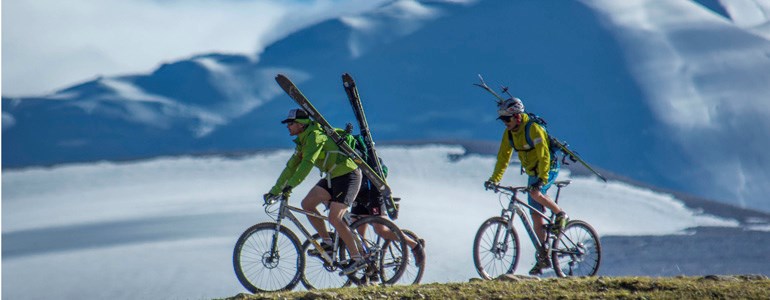
Avalanche on Shishapangma
We're sad to report that two climbers attempting to climb Shishapangma have died in an avalanche near the summit. We had earlier shared on these pages how Benedikt Böhm, Sebastian Haag and Andrea Zambaldi were attempting to climb two 8,000ers within a week. We had supported them with product.
“At 06:55 local time on 24th September, Sebastian and Andrea were caught in an avalanche at 7.900m, just 100m below the summit and were dragged for 600m vertical, over steep glaciers, into another section of the mountain,” a statement read on their website. The full report can be read here.
Haag, Böhm und Zambaldi at the start of their trip in Kathmandu. © Elias Lefas
Benedikt attempted to search for the pair with Ueli Steck, who was not part of the expedition but was climbing with Benedikt. Unfortunately the two were not able to reach the avalanche debris zone and were forced to turn back.
Our thoughts go out to their family and friends.
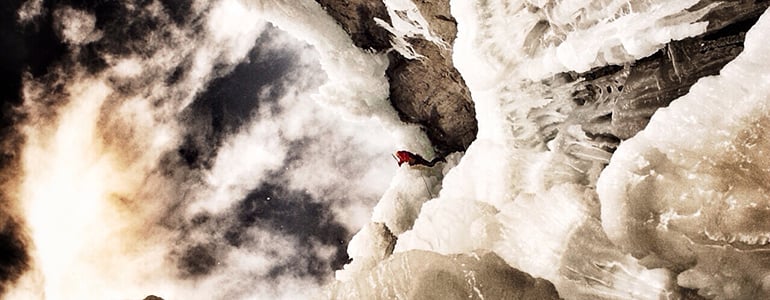
Time to plan some classic ice
Winter is coming! Time to start thinking about that ice climbing trip and where to head to this season. To help you make up your mind, we spoke to Suunto's Matthias Scherer and Tanja Schmitt and asked them for their recommended venues. In this first installment the pair, one of the most active ice climbing partnerships around, offer up some of the best lines for beginners and intermediates in the European Alps. Better start training...
Cogne, Italy
Matthias climbs steep ice in Cogne. ©Tanja Schmitt
Let's start with our home area 'Cogne'. Doubtless one of the best places we know so far to get a lot of climbing done within easy and quick access. But be aware – when it snows or the wind is blowing, our valleys become serious avalanche terrain – so please check always the avalanche forecast, before starting your adventure.
We recommend of course the 'Cascate Lillaz'. In good conditions it's a wonderful climb in the grade of WI 3. Small objective dangers and equipped belays with the possibility to quit the ascent on many places makes it a perfect beginners' line.
Freissinières and Sixt Valleys, France
Matthias climbs 'Shiva Lingam' in the Chamonix valley. ©Tanja Schmitt
This country hosts some of the most impressive ice climbing areas in Europe: Freissinières and the Sixt are valleys with incredible lines.
For scenic climbing in one of the most famous places in alpinism we recommend the 'Ruisseau du Picheu', WI 2 near to the Le Tour village in the Chamonix valley. Of course, you also need to check the avalanche conditions.
Kandersteg, Switzerland
Tanja Schmitt on Glücksritter, Adelboden, Switzerland. ©Matthias Scherer
Not really for beginners but in good conditions and with a stable snow pack a great challenge for the medium ice climber is the 'Glücksritter' fall WI 4+ in Adelboden. Impressive ice formation with a quick access in a wild cirque near to the world famous ice climbing area of Kandersteg...
Stubai valley, Austria
There's no easy way around the Stubai valley and the ice climbing area above the Pinisalm. The approach, with a toboggan (rent at the ski station) from the Elfer-ski area is super fun. Pinistal is home to impressive lines like 'Maenner' or the 'Kerze', a very aesthetic line. We recommend the massive ice shield of the 'Vorhang', WI 4+. In case the climbing is not exciting enough for you the way down back to the valley on the toboggan will do the job...
Velocity, the new ice climbing film from Matthias Scherer and Tanja Schmitt can be seen here.
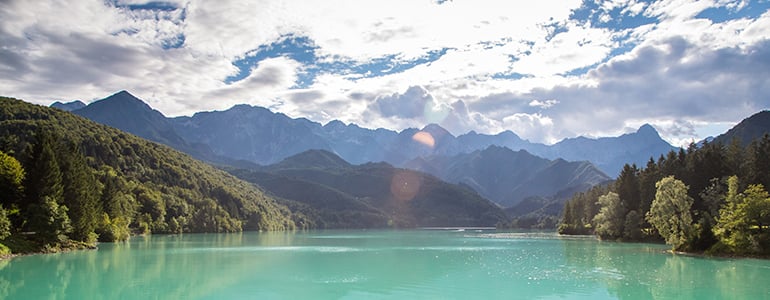
Mother nature left us hungry for more...
Trent Busenbark is a seasoned outdoorsman based in the US. He's also the proud winner of our #AdventureSelfie contest, winning an Ambit3 Sport. How does it feel to win? It’s always nice to see some appreciation for an image you personally captured, especially in today’s world where almost everyone has access to a camera. I am grateful for the consideration. Tell us about the photo.This photo was captured last September in Montana on a backcountry archery hunt. The original intentions were to bivy out for multiple days. On day one we packed in 15 miles (24 km) and the next day we were greeted with plummeting temps, severe wind, and driving snow. This photo was captured with a GoPro on our evacuation out of the mountains. Mother Nature and the rough terrain definitely got the best of us that trip but left us hungry for more. Plans are in place to return.
Trent's winning selfie.What gets your adventure blood pumping? For the most part my hobbies include virtually anything outdoors from horseback riding to skiing. There seems to have always been a heavy focus on hunting and photography. I'm a passionate outdoorsmen with a common goal – get out there as much as possible and always try to capture the moment. Tell us about a recent adventureI recently returned from Italy and enjoyed spending a couple days in the Dolomite Mountains. The views were fantastic! Another Montana trip is planned for November and is sure to present its own challenges.
Features you'd most like to use from the Ambit3?I am excited to use the GPS feature on the Ambit3. In Montana my Sunnto Core with its compass and altimeter proved vital in reading our topo map. It will be nice to leave specific waypoints along the way with the GPS feature. What's next? Towards the end of September I will be heading to Canada for a waterfowl outing and I will be returning to Montana for a late season elk hunt in November. If I am lucky I would like to squeeze in a ski trip this winter as well.
All images ©Trent Busenbark. Follow him on Instagram.
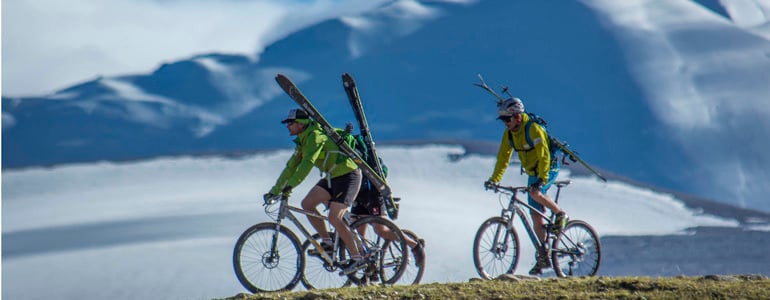
Mission to ski and ride the Himalayan greats
Three men, two 8,000ers, 7 days and 170km. Mode of transport? Bike and skis only. Welcome to the quest of ski mountaineers Benedikt Böhm, Sebastian Haag and Andrea Zambaldi. The German and Italian trio have just embarked on an epic mission to climb Shisha Pangma (8,013 m) then ride their bikes the 170 km to Cho Oyu (8,201 m) where they hope to make another speed ascent, all within a week.
They've spent the last week acclimatising up to 7,000 m and were all set to make their first summit attempt on Thursday September 18. However, bad weather and avalanche risk forced them to turn around. They're now back in base camp, preparing for a second summit bid.“Another attempt to climb Shisha Pangma is being planned and scheduled to happen within the next few days,” they blogged.
Big surprise of the trip so far? Bumping into Suunto ambassador Ueli Steck at base camp, no stranger to speed ascents himself.“Ueli gave many useful tips,” the guys said. Ueli climbed Shisha Pangma and Cho Oyu in 2011. The three ski mountaineers, who are supported by Suunto, can be followed online here.
All images © Elias Lefas
